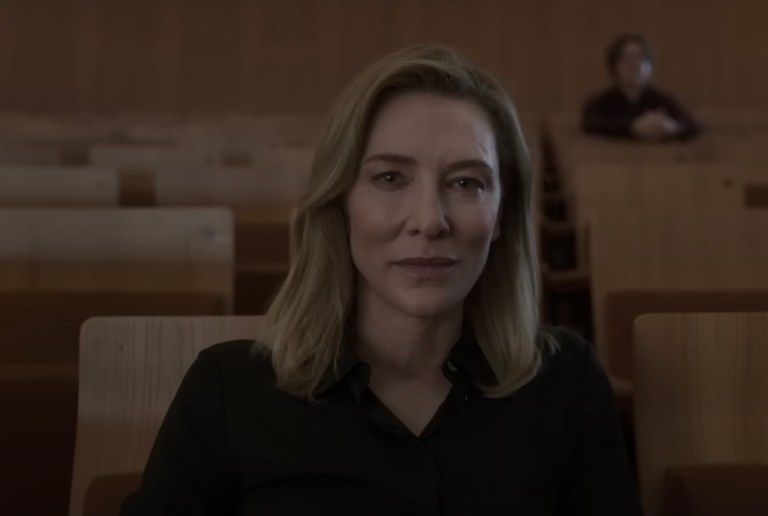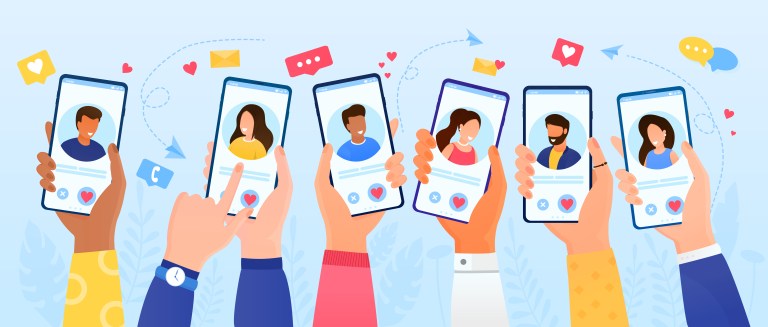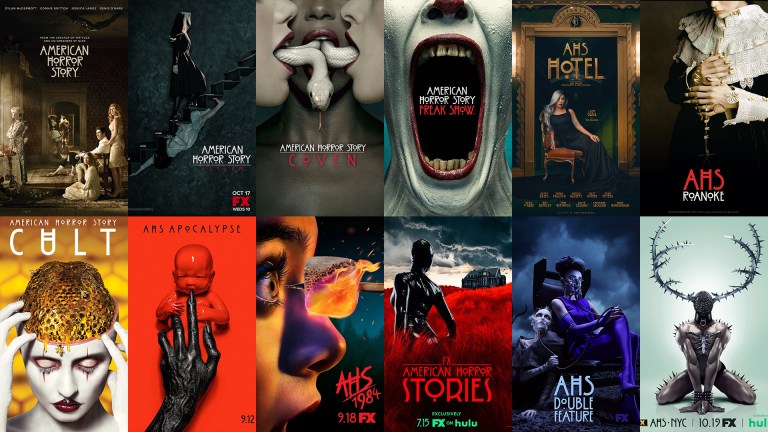I’m Like, So Gay Dude
Sometimes it’s actually super funny to watch acquaintances squirming to apologize after assuming we’re sisters, or to watch Mystery Method rejects stammer, searching for a cool-sounding answer to “we’re actually on a date with each other right now.”


Over the summer, we — Anna and Catie — attended a birthday party at the rooftop bar at the Ace Hotel in Downtown Los Angeles. David, a bearded straight guy, started talking to Catie, learning in close to listen and reaching out to touch her arm when he spoke; casual, obvious flirting. “How do you know Anna?” he asked. To leave no space for any kind of misunderstanding, Catie said, “We met on Tinder.” David paused, trying to reconcile this bit of information, and came to the following conclusion: “It’s so great that you can make such good friends on Tinder!”
“We’re dating,” Catie said. “We met on Tinder for dating.”
A few weeks later, Anna invited her friend Lauren to get brunch with, as she phrased it, “my girlfriend and some of her friends.” Anna thought by using the word “girlfriend” she had adequately defined the relationship for Lauren, but during the course of the brunch conversation, Lauren asked (twice!), “So Anna, how is your dating life going?”
Sometimes it’s actually super funny to watch acquaintances squirming to apologize after assuming we’re sisters, or to watch Mystery Method rejects stammer, searching for a cool-sounding answer to “we’re actually on a date with each other right now.” We walk away from these encounters in a position of power, which gives us swagger, and the ability to laugh at our would-be oppressors for their idiotic insistence on ignoring what should be obvious. Sometimes, though, these encounters make us feel like an out of sync YouTube video, an image of a person’s mouth moving and the audio appearing seconds too late.
The solution that our culture has developed to this widespread confusion is the standard coming out: a major declaration of sexual orientation. In this popular narrative, the coming out happens only once, creating a boundary between person’s life before (suppression, lies) and after (freedom, honesty). According to this narrative, after someone comes out, they’re never misread as straight again. The audience for this narrative is straight people (as in the fable, gay people can smell their own), and after listening to the coming out, they get to be the hero, accepting the gay people unquestioningly, a Good Ally, woke a.f. The straight audience also gets to put the gay person into a neat box with a clear label.
A few years ago, Anna was getting drinks with a high school friend, Henry. After their second drink, Henry said, “there is a cool lesbian in my office.” Anna’s eyes rolled involuntarily. “But she came out in the weirdest way,” he said. “She just casually mentioned her girlfriend at lunch.”
While mildly offended, Anna was also happy for an anecdote that succinctly encapsulated her issue with the coming out narrative: the unfair onus it puts on queer people.
Henry thought the girl’s “coming out” was “weird” because she didn’t make some grand proclamation, one that would make her feel exposed and uncomfortable and Other, one that would make Henry feel powerful and sanctimonious when he responded: I am not like you, but I accept you.
Unfortunately, the easy-to-follow version of the coming out formula doesn’t work for us, because neither of us identifies with the simple labels: lesbian, gay. (And in fact, the science suggests that most people are neither entire straight nor entirely gay.) Catie has embraced the unpopular label “bisexual” since she was 18; almost every time she comes out, to queer or straight people, she fields follow-up questions, the audience trying to figure out which of their neat boxes she belongs in. On the other hand, if Catie short-circuits the system, Anna cuts the wires. She’s taken a more elusive approach, refusing labels and deflecting with humor: if she tells someone she’s a lesbian, she qualifies that she only likes the word because it sounds like a rich girl’s name. Other times she quotes Melissa Broder of So Sad Today: “I’m bisexual but I sexually identify as impending doom.”
Regardless of our different strategies, however, we’ve reached a similar conclusion: the coming out narrative as currently understood does not work for us.
The first time Anna tried to tell her friends she was into women, it was around the time Lindsay Lohan began dating Sam Ronson. “Stop trying to be Lindsay,” they told her. When Anna told a family member she was questioning her sexuality. “You and your phases,” the family member responded. Anna told her best friend, who told her a mutual friend was “going through the same thing.” The mutual friend, the best friend assured, was not lesbian; rather, she was in a “rough place” and was “latching onto her female friendships because they’re safe.” Shortly thereafter, Anna confessed her homosexual feelings to her highly-credentialed therapist, who responded that Anna hadn’t met the right guy.
Unsurprisingly, given the dual forces of homophobia and misogyny, this burden is compounded when you are a woman who presents as a woman. The traditional coming out narrative requires a public announcement, and as Christine Friar recently wrote for The Awl following the outing of anonymous author Elena Ferrante’s real name, “there is no safe way, currently, to be both a female and public[….] If you are female, and you are talking, you are at risk.” In addition to the expectation to keep quiet, women are conditioned to distrust our own voices; instead, we’re taught to defer to others for how to think and feel. Thus, when Anna tried (albeit timidly) to come out, she listened to the voices who told her she was wrong. For years, Anna’s only same-sex relationships were with women who identified as straight. These experiences confirmed to Anna that sexual identity is less about desire and more about what one is comfortable revealing to the world. And the societal pressure to come out, combined with the expectation that women keep their sexual preferences to themselves, works only to increase discomfort.
Complicating matters, women are raised to see the male orgasm — rather than our own sexual gratification — as the goal of sex, including sex with another woman. Both of us had early sexual experiences with other women in public, at high school and college parties and in front of friends, actions that were accepted as “normal” because the patriarchy encourages women-on-women sex acts as a pleasing object of the male gaze. Though a genuine expression of queer sexuality, the audiences for our public displays of affection didn’t read them as queer, just another element of the heteronormative sexual experience. Talkspace, in an article on lesbian women and mental health, lists the assumption that lesbians are romantically with women “as some sort of trendy experiment rather than a legitimate sexual preference” as a particularly harmful stereotype.
While sexual behavior between women is championed by the patriarchy, their romantic coupling is frequently met with suspicion (is this really what you want?), confusion (why would societal inferiors wish to partner?), and even hostility (but what about the penis??). Despite years of active bisexuality, it wasn’t until Anna had an actual girlfriend that people started to take her bisexuality seriously. And the response was not positive. When Anna first had a girlfriend, her mother accused her of having a mental breakdown. Her friends speculated in her presence that she was depressed, or seeking attention. The chorus reiterated: “we know you’re going to end up with a man.”
At Catie’s first office job out of college, she made work friends with two women in their 40s, one straight woman and one lesbian. Both of them harbored a continued distrust for her bisexuality throughout the five years she worked there, even as she took care to keep them updated on her romantic life, dating first a woman then a man. The lesbian often told Catie she knew Catie was going to end up with a woman and the straight woman often told Catie she knew Catie was going to end up with a man. Nothing Catie said made them understand that her queerness wasn’t just a temporary state that would disappear when she “ended up” with someone. Catie just wanted the people around her to trust her words and actions, but queer or straight, they reacted with confusion rather than just listening to what Catie was saying.
Shannon Keating recently wrote in an article about Kristen Stewart’s sexuality that many of “her fans praised her for refusing to label herself, which is particularly trendy these days.” She said that she falls into the camp that is “frustrated with her” for refusing to identify herself. But why should Kristen Stewart have to identify herself? She wasn’t hiding anything. She often “stepped out” (to use a phrase favored by the gossip media) with any number of women, their public hand-holding and couple-y activities obvious indications that their connection went beyond friendship. Essentially, Stewart was behaving as though she was in a straight relationship, which confused people, or even angered them. To them, queer relationships should function under a different rule-set than straight ones; heterosexuality is assumed, anything else needs to be declared.
Maybe the pressure finally got to Stewart; in January, she “outed” herself while hosting SNL. But her “outing” was not of the 1997, Ellen DeGeneres, “I’m Gay” on People magazine variety, nor was it even of the 2014 Ellen Page (why are all lesbians named Ellen?) announcement at an HRC event. Stewart called herself “like, so gay dude” on SNL — an equivocal, tongue-and-cheek pronouncement well-suited to modern conceptions of sexuality.
A 2016 survey found that 35% of millennials, and 52% of individuals aged 13 to 20, identify as something other than exclusively heterosexual, but don’t necessarily use the terms “gay,” “bisexual,” or “lesbian” to define themselves. When Stewart “came out,” she didn’t say: I am gay, I am exclusively sexually and romantically attracted to woman. Instead, she said she was sorta gay, which the decades-old Kinsey Scale suggests we all are (the study also found that sexuality is not always consistent over time), and the rising generation is picking up on. As the uber-trendy Zodiac poets recently Tweeted:
Roxane Gay detailed in The Rumpus the unfair pressure put on celebrities to come out. While celebrities may feel this pressure more intensely, the burden is not exclusive to those in the public eye. Gay’s thesis that “it is [] an unreasonable burden that someone who is marginalized must bear an extra set of responsibilities” could be equally applied to queers of all social strata.
We don’t intend to ignore the reality that, for many queer people, coming out is not a choice. For those whose queerness is obvious for whatever reason, coming out is a luxury not available to those who — like us — blend seamlessly in straight circles. They suffer from a different burden.
The aim of this article is not to detract from the powerful historical significance of coming out — namely, the role it played in LGBT’s fight for equal rights or from people whose lives changed for the better when they sat their families and friends down and made the big announcement.
But it’s time for us to approach the cultural practice with a critical eye, to take note of that fact that for people whose sexuality cannot be easily defined, the expectation of coming out can be anxiety-producing and toxic. Recently on Fresh Air, Sarah Paulson spoke the apprehension involved in a traditional coming out for someone who has been romantically involved with both genders: “I don’t want to be stuck with some kind of label that makes me then a traitor to people if I make a different choice.”
The model Lily Rose Depp was recently mocked for comparing her sexuality to dietary habits, but the analogy is not far-flung. The comparison normalizes sexual fluidity and by comparing it to something equally shifting and infinitely less taboo.
Our decisions and behavior regarding sexual behavior and romantic partnering are complicated, not determined by genetics, so as “The New Scientist” wrote in 2015: “it’s time we get past ‘born this way.’” Likewise, Jenna Wortham recently wrote for The New York Times, “Someday, maybe we’ll recognize that queer is actually the norm, and the notion of static sexual identities will be seen as austere and reductive.”
While the coming out narrative once was important for achieving equality, it has lost political force in an era where sexuality fluidity is increasingly understood and visible. It’s time we stop expecting queer people to choose and announce a cleanly-defined sexual identity, and start allowing them to behave just like everyone else. ![]()




